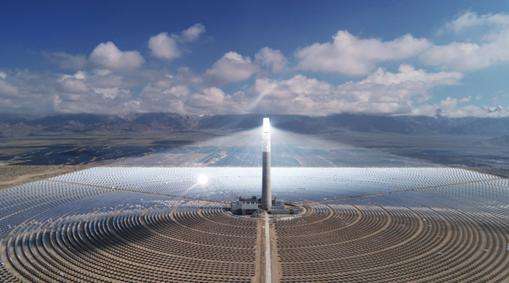Electricity generation methods include: thermal power generation, hydroelectric power generation, nuclear power generation, wind power generation, geothermal power generation, etc.
Power generation refers to the production process of using power generation devices to convert raw energy such as water energy, thermal energy from petrochemical fuels (coal, oil, natural gas), nuclear energy, etc. .in electrical energy.
Electricity generation is used to meet the needs of various departments of the national economy and people's lives.
Nowadays, fossil fuels are still used as the main form of electricity generation, but fossil fuel resources are not plentiful and are becoming increasingly depleted. Human beings have graduallystarted using solar energy, wind energy and geothermal energy. , ocean energy and other energy sources to generate electricity.
Firepower:
Advantages: The technology is mature and the current cost is low. Low geographic environment requirements.
Disadvantages: high pollution, poor prospects for sustainable development. It consumes a lot of energy and has low efficiency.
Hydraulics:
Advantages: long history, low subsequent costs. No pollution, renewable water energy, large total water energy reserves.
Disadvantages: large capital investments and high requirements for geographical environment. For example, southwest China is extremely rich in water resources, but the natural environment is harsh and construction is difficult, making it impossible to use. them.
Detailed information:
Electricity generation is the use of electricity generating devices to convert water. Energy and fossil energy in Fuel thermal energy, nuclear energy, solar energy, wind energy, geothermal energy, ocean energy and other energies are converted into electrical energy . By the end of the 20th century, most electricity generation used the method of burning fossil fuels. However, fossil fuel resources are not abundant and are becoming increasingly depleted. At present, humans are gradually using renewable energies (hydraulic energy, solar energy, energy). wind energy, geothermal energy, marine energy, etc.) to produce electricity.
The basic principle of hydroelectricity is to use the difference in water level to produce electricity withc a hydroelectric generator, that is to say the potential energy of the water is converted into mechanical energy of the water wheel, then into mechanical energy. mechanical energy is used to drive the generator to obtain electricity. Scientists take advantage of the natural conditions of water level difference, effectively use fluid engineering and mechanical physics, and carefully combine them to achieve the highest power generation capacity, so that people can use an electricity cheap and pollution-free.
Thermal power generation generally refers to the use of thermal energy generated when fuels such as oil, coal and natural gas are burned to heat water, transforming the water into water vapor at high temperature and high pressure, and then use the water vapor to drive a generator to produce electricity. The nom general of the method. Power plants that use coal, oil, or natural gas as fuel are collectively called thermal power plants.
Reference Material Baidu Encyclopedia: Power Generation














